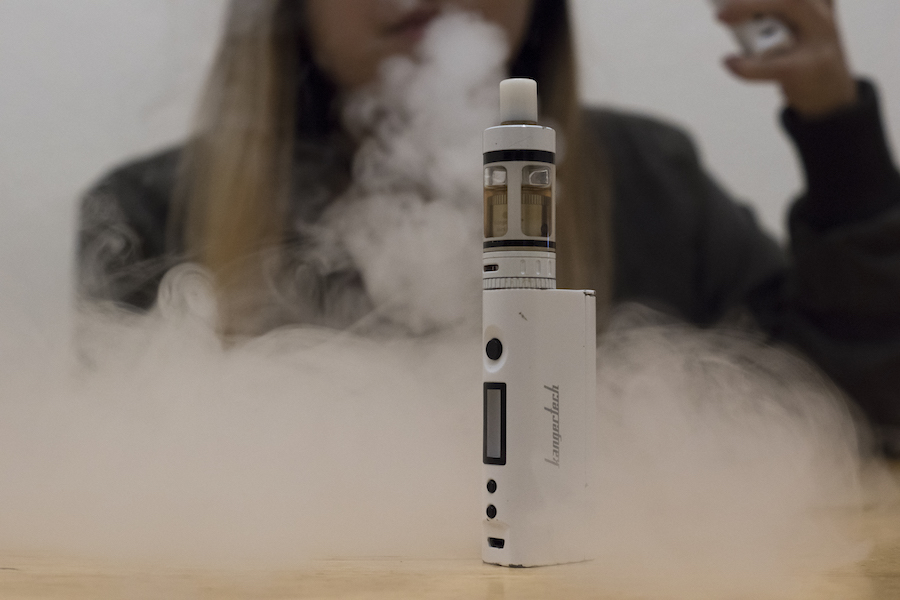
Negative effects of vaping explored by UC Newsroom
Within the past century, smoking cigarettes was advised by physicians as a method of keeping a slim figure. The health effects of this were disastrous and progressive awareness campaigns were launched that gradually brought the smoking rate to its current all-time low in the U.S. Recently, the UC Newsroom investigated a similar and potentially just as dangerous contender that has joined the smoking room: electronic cigarettes.
E-cigarettes, also known as vapes or e-hookahs, are devices that heat a nicotine-containing liquid into an aerosol that the user inhales. What many vapers may not realize is that, besides nicotine, e-cigarettes can contain potentially harmful ingredients including chemicals known to cause heart and lung disease, heavy metals, carcinogens and other ultrafine particles. Though advertised as “harmless water vapor” by the e-cigarette industry, this couldn’t be further from the truth.
“We are learning more about the health impacts of inhaling vapor, or aerosol and secondhand vapor,” said Elisa Tong, UC Davis assistant professor of general medicine who works with UC Quits, a tobacco cessation network across the five UC medical campuses. “It is not water vapor but propylene glycol that contains other chemicals [nicotine, flavorings, additives] and particles.”
The sleek design and technological sophistication are just a couple of factors that contribute to a cloud of appeal and normalcy around the notorious e-cigarette. The media, which heavily influences the perception of products on the market, has also played a critical role in skyrocketing popularity.
“Every single big tobacco company has at least one e-cigarette brand. Since e-cigarettes had not been regulated, they used many of the same advertising tactics that they did for cigarettes years ago,” Tong said. “Certainly this includes getting product placement and celebrity endorsements that are advertised through the media.”
Along with this, a plethora of attractive flavors, such as “Smurf Cake” and “Fruit Hoops,” often make it appear as though you are purchasing a pack of bubblegum rather than a harmful nicotine product. These flavors, though edible, can be harmful when inhaled. Diacetyl, a chemical linked to lung disease, is an example of a common flavorant in e-cigarettes, according to the U.S. Surgeon General.
Besides the negative long-term health effects, e-cigarettes also have explosive tendencies.
“Batteries used in e-cigarettes have been known to explode causing burns and damage to teeth,” said Diana Cassady, a UC Davis professor in the Department of Public Health Sciences in an email interview.
Another indisputable problem with e-cigarettes is that they continue to fuel smokers’ nicotine addictions, an unfortunate effect considering that many try to use them to wean themselves off of traditional cigarettes.
“A puff on an e-cigarette is not as dangerous as a puff on a regular cigarette,” said tobacco control activist Stanton Glantz. “The most important negative effect of vaping is that they keep people smoking conventional cigarettes. They reduce the likelihood that a smoker will quit by a third.”
The Centers for Disease Control and Prevention (CDC) recommends FDA-approved nicotine replacement products, such as skin patches and chewing gum, for current smokers wishing to quit. The Surgeon General also revealed that the use of e-cigarettes is “higher among high school students than adults.”
Despite rising e-cigarette popularity, states such as Hawaii and California have given their citizens reason to take in a breath of fresh air by officially declaring e-cigarettes as tobacco products and issuing regulations on their use, such as setting the minor age of consumption at 21.
Written by: Harnoor Gill — science@theaggie.org



